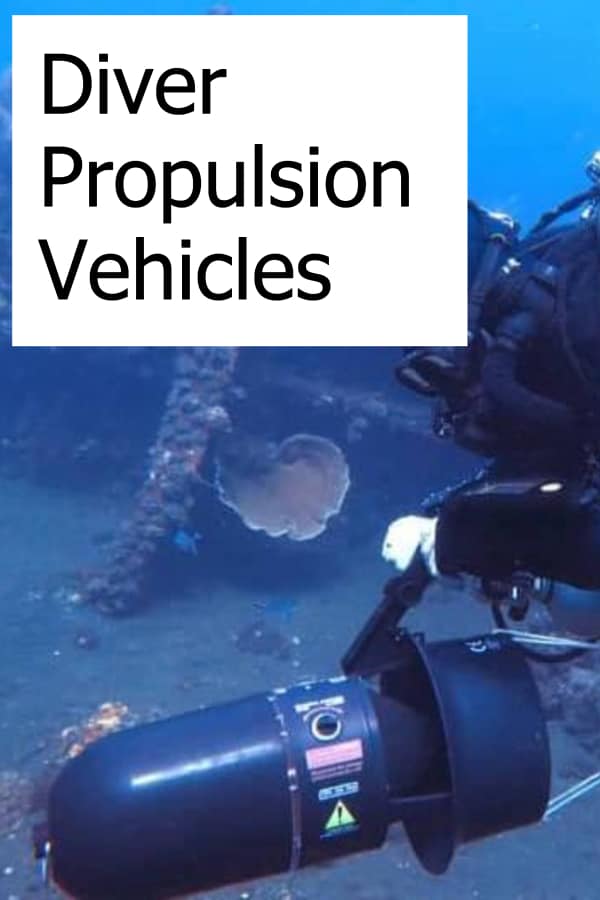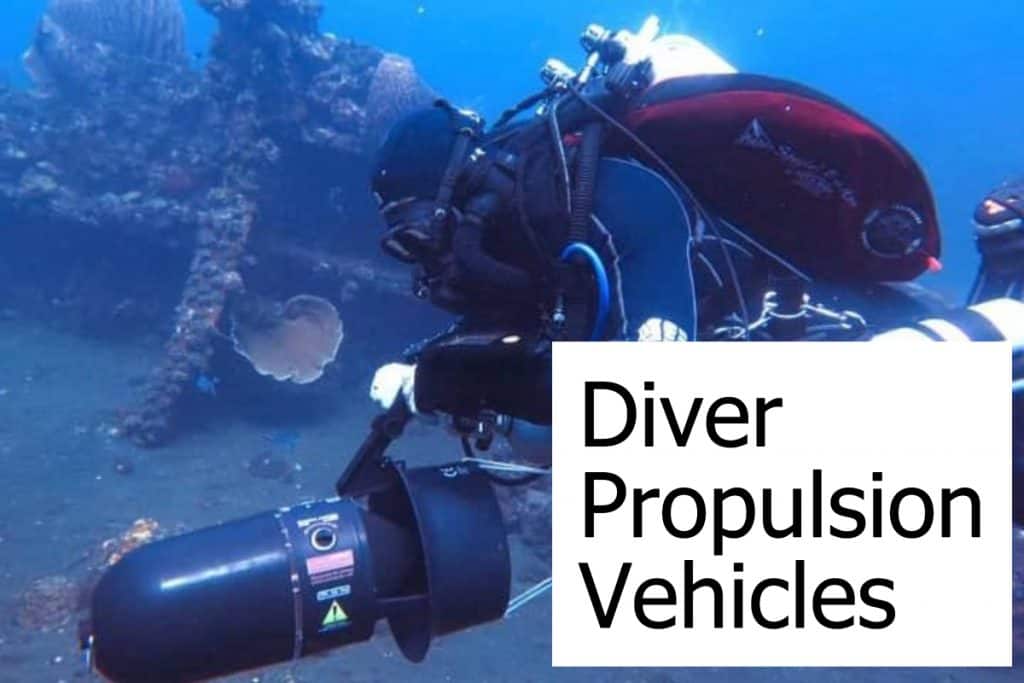Diver Propulsion Vehicles
DPV’s are not such a common sight when scuba diving. Yet, you might wonder whether it would make sense to try or buy such a Diver Propulsion Vehicle (DPV). Let’s shed some light on what they are, what kinds you can get, and whether you should consider having a closer look at them.
What is a DPV?
A diver propulsion vehicle is a motorized device powered by a propeller that provides thrust and movement through the water to the diver operating it. Also known as underwater propulsion vehicles or underwater scooters, DPVs are safe to both the diver and other marine life, as they are designed with protective housings around the propeller.
The purpose of DPVs is to reduce the amount of effort a diver needs to get from place to place underwater. The ability to cover distances faster does present its own dangers, but when used properly, DPVs drastically improve the time spent underwater and the amount of oxygen needed for a dive.
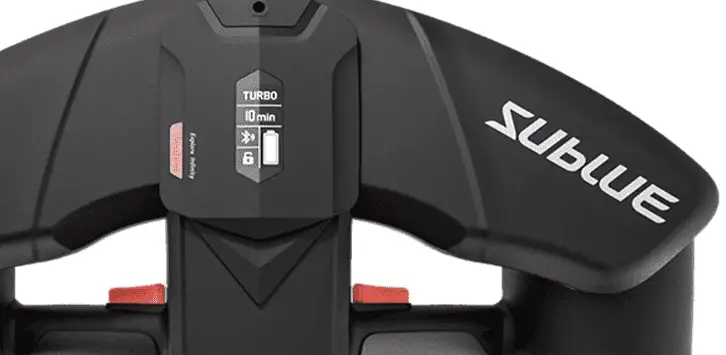
In addition to practical uses, DPVs are really fun to use. The feeling of being pulled through the water with your arms stretched out and your legs trailing behind is like no other. It’s almost like flying.
Whether you live near the ocean, a river, or freshwater lake, DPVs are great summer fun. With prices as low as they’ve ever been, owning one is no more a burden than purchasing a bicycle.
Different kinds of DPV
DPVs range from recreational to military grade. They can measure anywhere from smaller than the size of a human body to the size of a small boat. Unless you’re working for the government or a private company, most divers will only ever encounter small, recreational DPVs.
There are a few different types to choose from. These compact designs incite images of a mermaid catching a ride on the dorsal fin of a dolphin through an aquamarine wonderland. They are almost that magical to play with!
1. Diver-Tugs
The body of a diver-tug is about half to a third of the size of an adult male, with handles on the bow of the device for the diver to hold onto. With this configuration, the diver’s waist or legs are stationed above, or parallel, to the propeller.
They are usually torpedo-shaped, though sometimes appear a bit squarer. The motor sits in the front of the device, with the propeller is at the rear. This is the most popular type of recreational DPV.
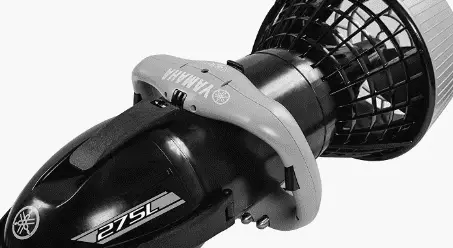
2. Manta Boards
Nature got it right the first time! Humans took note of the hydrodynamic design we can observe in Manta Rays, and that’s where manta boards take their name from. Unlike diver-tugs, manta boards have no motor.
Instead, they are pulled through the water by a boat or Jet Ski on the surface via a rope. For this reason, these toys are also known as underwater sleds or bodyboards.
The diver holds onto the front of the board, or two handles near the front of the board. As the boat or Jet Ski picks up speed, the diver angles the board downward, much like a surfer diving beneath a wave. Once at their chosen depth, they can glide through the water as long as their scuba tank is full – How Long can you stay underwater with a Scuba Tank?
3. Tow-Behinds
Unlike diver-tugs, which require the diver to hang onto the top of the scooter, tow-behinds tow the diver behind the device, just as the name implies. The handles are built on the sides or on top of the stern. The diver’s body flows in line with the scooter, making this the most hydrodynamic and efficient design out there.
When does it make sense to use a DPV?
Some professional or otherwise extremely experienced divers with specific underwater objectives find DPVs useful tools to have. For example, let’s say there are a number of underwater pipes in need of repair, spaced a few hundred feet away from each other. A diver could use a DPV to slowly descend to the first pipe to fix it. Then, they could quickly traverse the distance between each pipe in order to save time an air.
Recreationally, there’s really no right or wrong in using these devices as toys. Of course, users need to be careful and aware of their surroundings. The ideal place to use DPVs is in a quiet cove or lake. Clear water is hugely beneficial to your enjoyment and safety. Fly over coral reefs, take a lap around an underwater track, race friends below the waves, or slow down to photograph brightly-colored fish.
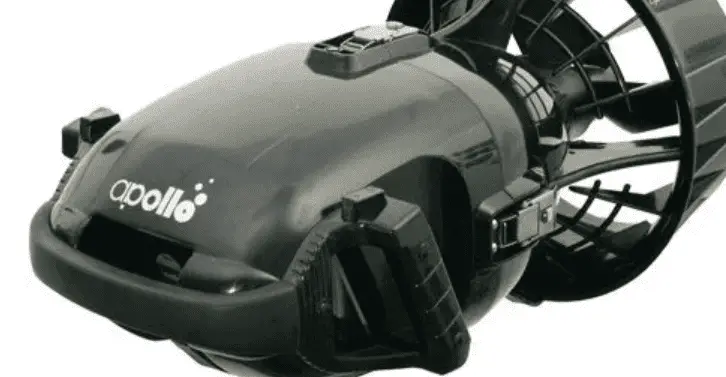
Who should buy one?
Experienced scuba divers will get the most enjoyment out of a DPV, simply because they can travel for long distances beneath the water without having to surface. Before using one of these devices, it’s important every diver understands how to safely dive and ascend. Diving or ascending quickly is very dangerous, or even deadly.
Non-certified divers who prefer to snorkel will also enjoy using DPVs. This type of use is best suited to shallow water. This way, the diver can take short dives to the bottom to examine the sea life while holding their breath.
Families often get enjoyment out of a single DPV. Parents and children alike will enjoy taking turns. All participants should have spent a lot of time in the water and be great swimmers since you can’t wear a personal flotation device while the device is in use.
